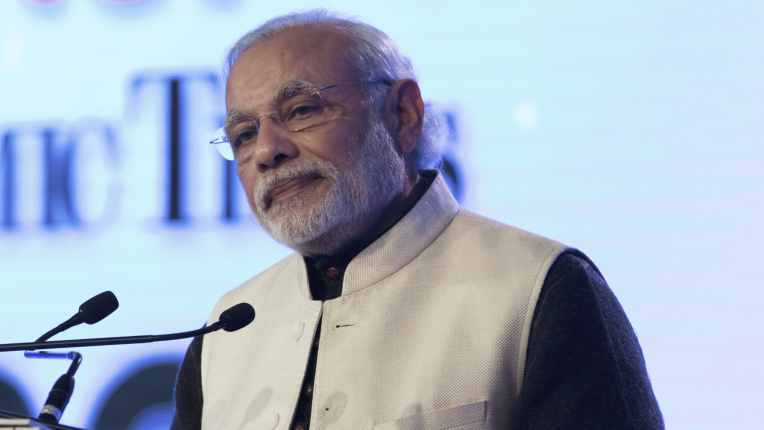Push India towards the Quad to deter China
by Lavina LeeWhile the world is reeling from the devastation of a virus the Communist Party recklessly unleashed, Beijing is seizing the moment.
As the spread of COVID-19 subsides in China, Beijing has stepped up incursions into Japanese territory in the East China Sea, has sent a People's Liberation Army Navy aircraft carrier group to the waters surrounding Taiwan, impeded the exploitation of resources in the South China Sea by rival claimant states, and is planning to impose national security laws on Hong Kong which would contravene the One Country Two Systems principle, and continues its economic coercion over Australia for calling for an investigation into the origins of COVID-19.
When the world recovers from the effects of the COVID-19 pandemic, these Chinese actions will not be forgotten.

Australia might not be a great power, but it is at the forefront of regional efforts to counter the worst aspects of Chinese actions. The key is to encourage and support as many capable states in our region to act to defend their interests against China, just as it is China’s primary strategy to neutralise the possibility of collective action against it.
In this context, the Quad – the US, Japan, India and Australia – has been raised as an important mechanism. Peter Varghese, a former secretary of the Department of Foreign Affairs and Trade, for example, argues that the four countries' collective power can serve as a bulwark against Chinese dominance.
Are these hopes justified or misplaced? The key is India which so far is the laggard despite New Delhi having a strong interest in preventing Chinese dominance in the Indo-Pacific.
For the Quad to fulfil the hopes placed upon it, we need ways to activate India by understanding its strategic limitations and working within them.
India is the outlier among the four because of its greater vulnerability to Chinese retaliation and lesser capacity to absorb any punishment. It has long-standing and substantial territorial disputes with China and India’s capabilities and resolve to defend its claims are periodically tested through Chinese military incursions along an un-demarcated 3488-kilometre-long Line of Actual Control between the two countries. The last crisis occurred in 2017 in the Doklam Plateau, which involved a serious military standoff.
The Quad can be meaningful if we push in areas that bear Indian limitations and interests in mind.
Other points of vulnerability for India include China’s military and diplomatic support for Pakistan, and the possibility that Beijing could encourage Islamabad to challenge the Line of Control in Jammu Kashmir directly or through proxies.
India’s risk/cost calculation must also be understood within the context that it is still a developing country with a military budget almost four times smaller than China’s. Unlike the other Quad members, India also has a deep aversion to concluding formal alliances with any state.
Things are changing. Under Prime Minister Narendra Modi, India has more appetite for standing up for its national interests as demonstrated by its firm response to China’s attempts to change the territorial status quo in the Doklam Plateau.
Further, India’s perception that China is deliberately shrinking its strategic space has been magnified by the extension of the PLAN’s power projection capabilities into the Indian Ocean, and the expansion of Beijing’s capacity to extend its political influence over India’s neighbours: Bangladesh, the Maldives and Sri Lanka.
In this context, China’s underwriting of infrastructure investment through its Belt and Road Initiative (BRI) and luring these smaller countries into a "debt trap" is of high concern.
The Quad can be meaningful if we push in areas that bear Indian limitations and interests in mind. Australia should be included as an official observer of the next annual Malabar naval exercises between India, Japan, and the US, with non-permanent participation as the next step.
To offer India some breathing space, naval exercises should occur in the Indian Ocean, rather than the South China Sea, with a focus on the provision of public goods (disaster relief, humanitarian assistance, anti-piracy and search and rescue) in the first instance, with the implication that the agenda could expand to include amphibious warfare and anti-submarine warfare depending on Chinese behaviour.
Enhancing maritime domain awareness, the sharing of logistics for power projection and greater access to, and joint development of defence technology among the four are other obvious areas of priority. The Quad could also create an Indo-Pacific critical infrastructure fund – based on best practice governance standards – as a viable alternative to China’s BRI for small states that are vulnerable to debt-trap diplomacy as a result of their geostrategic value to China. To keep India committed, that fund should include economies around the Bay of Bengal in India’s backyard.
These would be incremental measures where Quad members acquire the ability to accelerate and deepen collective action should the need to deter attempts by China to change the status quo increase. Meanwhile, Quad members would be developing the necessary institutional framework and personal relationships to do just that.
General Secretary Xi Jinping is nothing if not a true Leninist. He is a devotee of the well-known Leninist precept: probe with bayonets. If you encounter mush, proceed; if you encounter steel, withdraw. In strategic terms, the absence of a collective and countervailing force will only embolden Beijing while the presence of genuine resistance will cause China to recalculate.
One should note that Beijing frequently denigrates the Quad because it respects and fears what it might become. This was the case before the pandemic and more so in a post-COVID-19 world.
The Quad is an idea whose time has arrived.